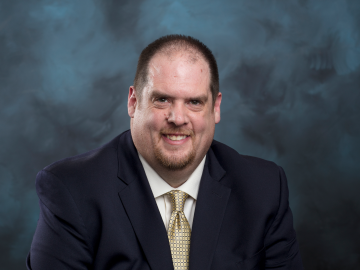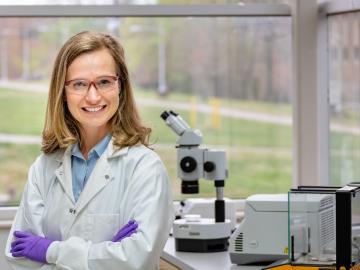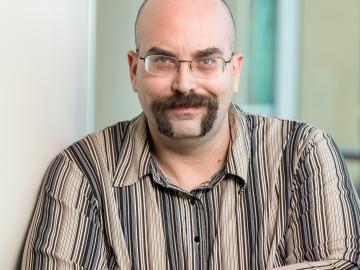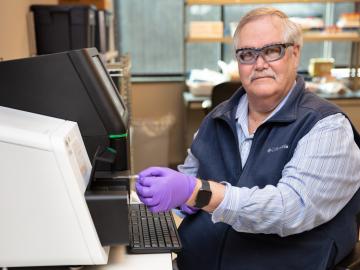
Filter News
Area of Research
- (-) Biology and Environment (119)
- (-) Nuclear Science and Technology (35)
- Advanced Manufacturing (7)
- Biological Systems (3)
- Biology and Soft Matter (4)
- Building Technologies (3)
- Chemical and Engineering Materials (3)
- Chemistry and Physics at Interfaces (7)
- Clean Energy (208)
- Climate and Environmental Systems (7)
- Computational Biology (1)
- Computational Chemistry (5)
- Computational Engineering (2)
- Computer Science (4)
- Data (1)
- Earth Sciences (1)
- Electricity and Smart Grid (2)
- Energy Frontier Research Centers (7)
- Energy Sciences (2)
- Fuel Cycle Science and Technology (2)
- Functional Materials for Energy (10)
- Fusion and Fission (43)
- Fusion Energy (7)
- Geographic Information Science and Technology (1)
- Isotopes (24)
- Materials (186)
- Materials Characterization (2)
- Materials for Computing (17)
- Materials Synthesis from Atoms to Systems (8)
- Materials Under Extremes (8)
- National Security (53)
- Neutron Data Analysis and Visualization (2)
- Neutron Science (83)
- Quantum Condensed Matter (3)
- Quantum information Science (5)
- Renewable Energy (2)
- Sensors and Controls (2)
- Supercomputing (172)
- Transportation Systems (6)
News Type
News Topics
- 3-D Printing/Advanced Manufacturing (7)
- Advanced Reactors (6)
- Artificial Intelligence (7)
- Big Data (7)
- Bioenergy (29)
- Biology (48)
- Biomedical (9)
- Biotechnology (6)
- Chemical Sciences (8)
- Clean Water (8)
- Climate Change (26)
- Composites (2)
- Computer Science (13)
- Coronavirus (7)
- Critical Materials (1)
- Cybersecurity (2)
- Decarbonization (15)
- Energy Storage (5)
- Environment (64)
- Exascale Computing (4)
- Frontier (3)
- Fusion (8)
- High-Performance Computing (14)
- Hydropower (5)
- Isotopes (4)
- Machine Learning (6)
- Materials (8)
- Materials Science (7)
- Mathematics (3)
- Mercury (6)
- Microscopy (9)
- Molten Salt (2)
- Nanotechnology (7)
- National Security (2)
- Net Zero (1)
- Neutron Science (5)
- Nuclear Energy (20)
- Partnerships (1)
- Physics (3)
- Polymers (2)
- Renewable Energy (1)
- Security (1)
- Simulation (10)
- Space Exploration (1)
- Summit (7)
- Sustainable Energy (18)
- Transformational Challenge Reactor (3)
- Transportation (2)
Media Contacts

As a teenager, Kat Royston had a lot of questions. Then an advanced-placement class in physics convinced her all the answers were out there.

A software package, 10 years in the making, that can predict the behavior of nuclear reactors’ cores with stunning accuracy has been licensed commercially for the first time.

The techniques Theodore Biewer and his colleagues are using to measure whether plasma has the right conditions to create fusion have been around awhile.

Jeremy Busby, director of the Reactor and Nuclear Systems Division at the Department of Energy’s Oak Ridge National Laboratory, has been elected fellow of the American Nuclear Society for his contributions to developing materials for nuclear energy

As a computational hydrologist at Oak Ridge National Laboratory, Ethan Coon combines his talent for math with his love of coding to solve big science questions about water quality, water availability for energy production, climate change, and the

Ask Tyler Gerczak to find a negative in working at the Department of Energy’s Oak Ridge National Laboratory, and his only complaint is the summer weather. It is not as forgiving as the summers in Pulaski, Wisconsin, his hometown.

Amber McBride is using her expertise in nanotechnology, drug delivery, and disease models to research fundamental challenges in human health in the ORNL Biosciences Division.

Scientists have demonstrated a new bio-inspired material for an eco-friendly and cost-effective approach to recovering uranium from seawater.

Attracted to biology, math, and physics as a young student, Omar Demerdash decided that when the time came to narrow his academic interests he wouldn’t pick and choose: he’d pursue them all. Today he’s using his expertise in computational biophysics to model and analyze how molecules interact with p...



